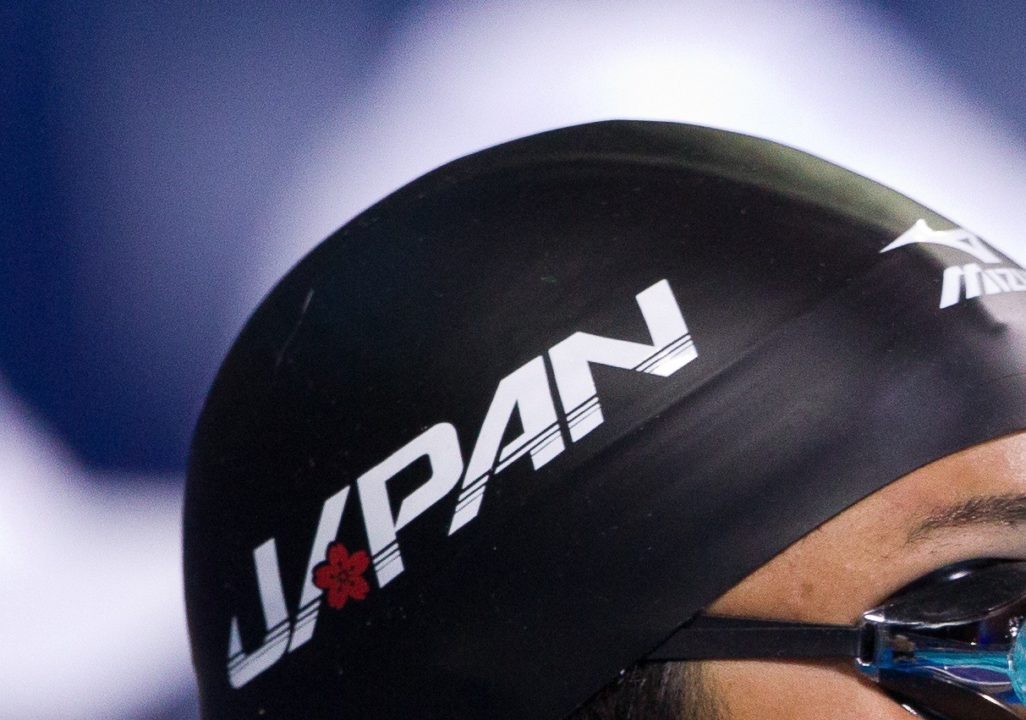While it wasn’t quite the World Record breaking performance of Katie Ledecky in Texas from Thursday night, the Japanese elites had quite a day for themselves on Friday, breaking three National Records in 8 events at the Japan Open.
While this meet has been home to a lot of very good, and even season-best, swims for Japan, it has rarely been the home to so many National Records as it has this year.
The first came in the men’s 1500 free, where 23-year old Kouhei Yamamoto swam to a 14:54.80, which broke the 14:57.12 done by Yohsuke Miyamoto at the 2011 World Championships. That swim put Yamamoto into the lead by almost 13 seconds, and in fact was 27 seconds faster than the 5th-place swim of Miyamoto in this race (he is only 24 himself, so in his prime as well).
The time is also five seconds faster than Yamamoto was at Japan’s Nationals earlier this year, and bumps him up to 3rd in the world.
In the very next event, Satomi Suzuki broke the National Record in the 50 meter breaststroke with a 31.04. Perhaps that record going down wasn’t the big surprise, after how well Suzuki and Kanako Watanabe swam en route to a record in the 100 breaststroke. Rather, the bigger surprise was that it was Suzuki who got it, and not Watanabe, who’s also drastically improved her speed as of late.
Watanabe, however, wasn’t even entered in the event this weekend, leaving the record to Suzuki. The time broke Suzuki’s 31.30 done earlier this year.
Just two events after that, the 3rd Japanese Record of the day was broken, as Miho Takahashi swam a 4:35.69 in the women’s 400 IM. Takahashi was already the holder of the short course meters record, but now has broken the 2000 record of Yasuko Tajima – the oldest Japanese National Record still in existence.
This race was actually rather close between her and Miyu Ohtsuka after the breaststroke, with Otsuka having led the first 200 meters of the race. Takahashi, however, exploded on the freestyle, splitting a 1:04 (to Ohtsuka’s 1:08) to finish the win. Ohtsuka was 2nd in 4:40.39.
Other winners on the day:
- Kouhei Tominaga won the men’s 50 breaststroke in 27.60, edging an unsurprisingly-deep field that included Yuuki Okajima (27.70) and Kouichirou Ozazaki (27.73). Much like in the women’s race, the 100 meter champion Yasuhiro Koseki wasn’t in this 50 meter final.
- Chihiro Igarashi won the women’s 200 free final in 1:58.96, the only swimmer under two minutes. Second-fastest, though ineligible for placing, was Shauna Lee of the British junior squad in attendance.
- Takeshi Matsuda, still going strong a few days before his 30th birthday, won the men’s 200 free in 1:47.73. He had to turn on his speed, but did so successfully, in the last 50 to beat Reo Sakata (1:47.99).
- Shiho Sakai won the women’s 100 back in 1:00.68, beating Sayaka Akase (1:00.81). For Akase, that’s the same time she went at Japanese Nationals, but for Sakai, that’s a full second improvement (and would have won in April).
- The day finished with Ryosuke Irie being electric again, and in fact swimming better even than at the Mare Nostrum. He won the men’s 100 back in 52.69, beating out Kosuke Hagino (53.39) and Junya Koga (54.01). This is one of the best races in Japanese swimming domestically, and that showed in the times here.

My friend from Japan told me that many swimming instructors there teach breaststroke and backstroke before the crawl. The rationale is that it’s easier to get someone comfortable with the water using strokes where they can breathe when they want to and it allows them to focus more on technique and streamlining. Once you have a solid backstroke and are confident in the water, she says it’s fairly easy to teach breath timing because you’ve already got a solid understanding of body and head position from backstroke.
Thanks for your reply, Josh! That’s really interesting. Purely from a water safety standpoint, it makes sense to teach kids to roll over, float on their back and kick to safety first, so teaching backstroke first follows nicely. I disagree with breastroke next though, because too many kids have trouble with breaststroke kick, and if you try to teach it when they’re struggling to stay afloat the kids will develop bad habits, IMO. I have noticed that breaststroke kick seems to come quite naturally to many Asian children, but that may just be a false impression.
I’m always very impressed by the Japanese swimmers! They seem to have the best stroke technique, especially in back and breast events. They usually don’t seem to be as tall or muscular as their opponents, but because of technique and conditioning they swim faster than you would expect, except in sprint freestyle events. If money were no object I’d love to spend a year in Japan learning their system for teaching stroke technique!